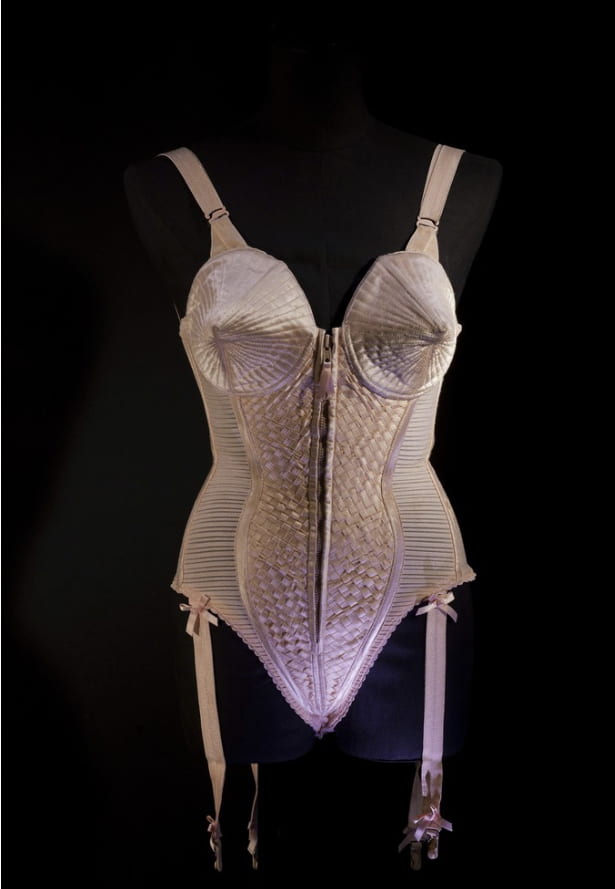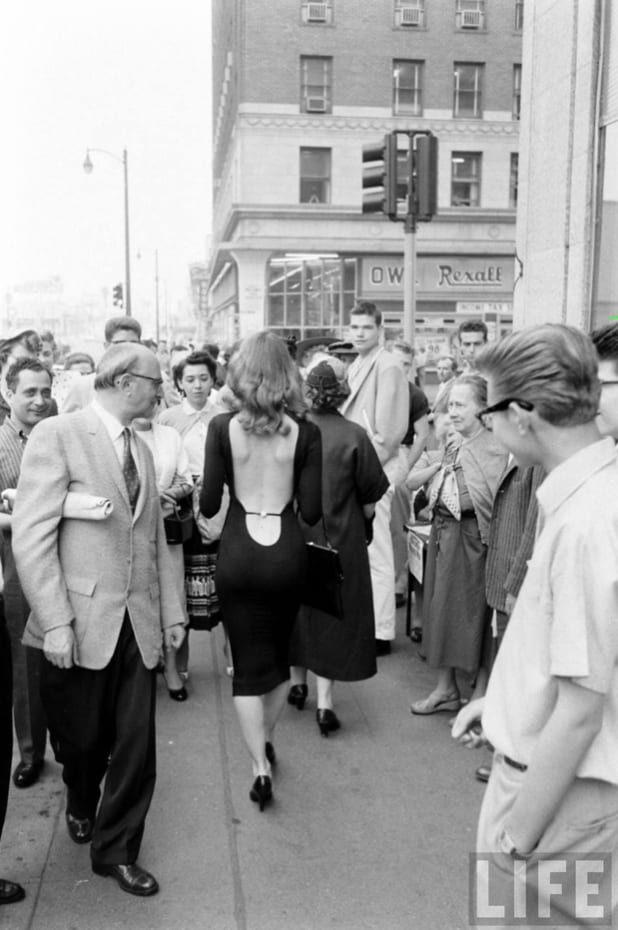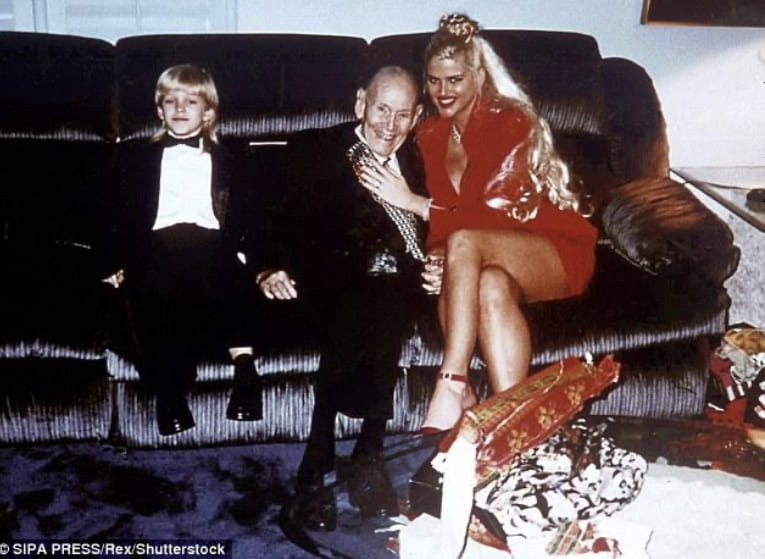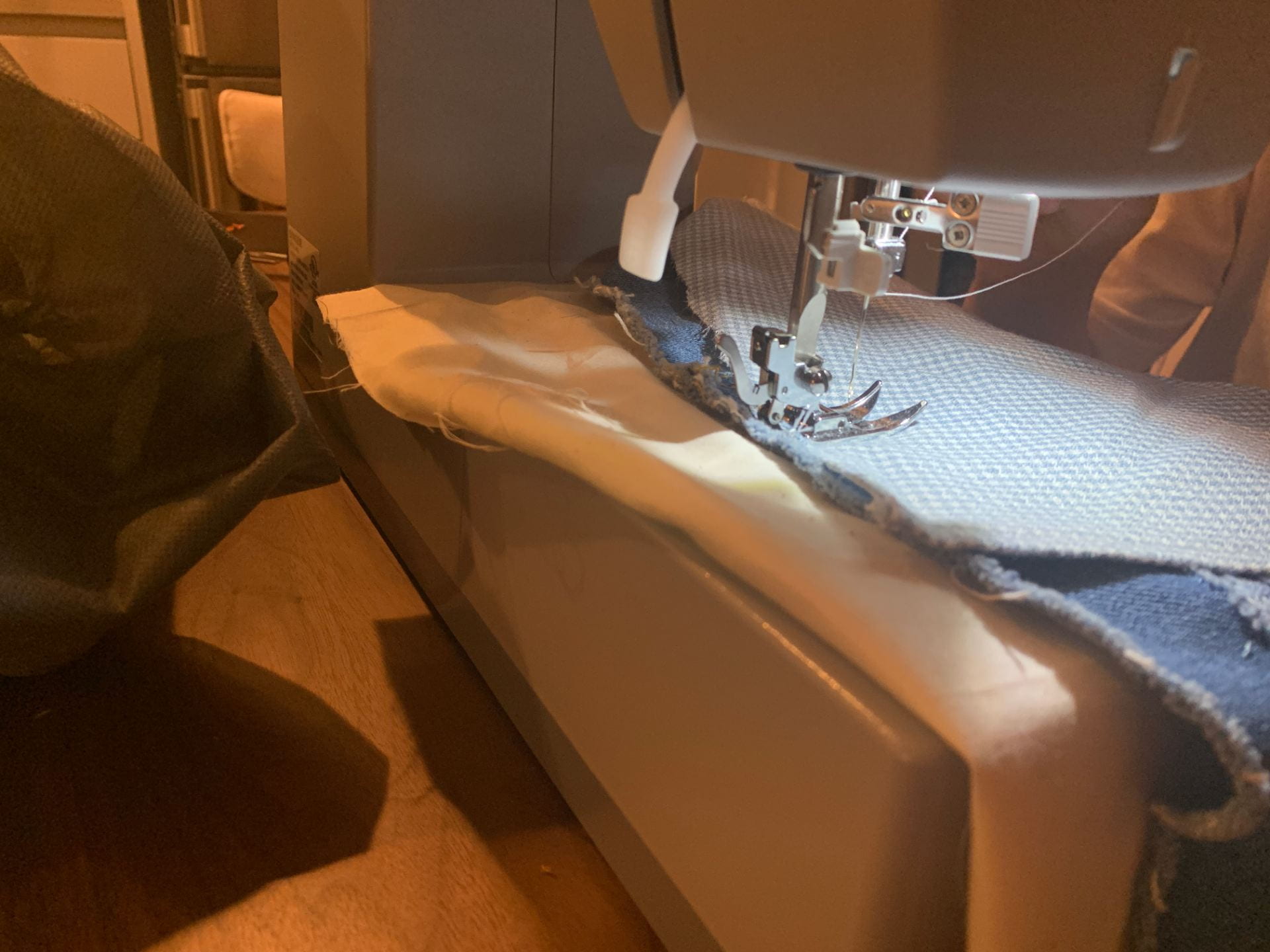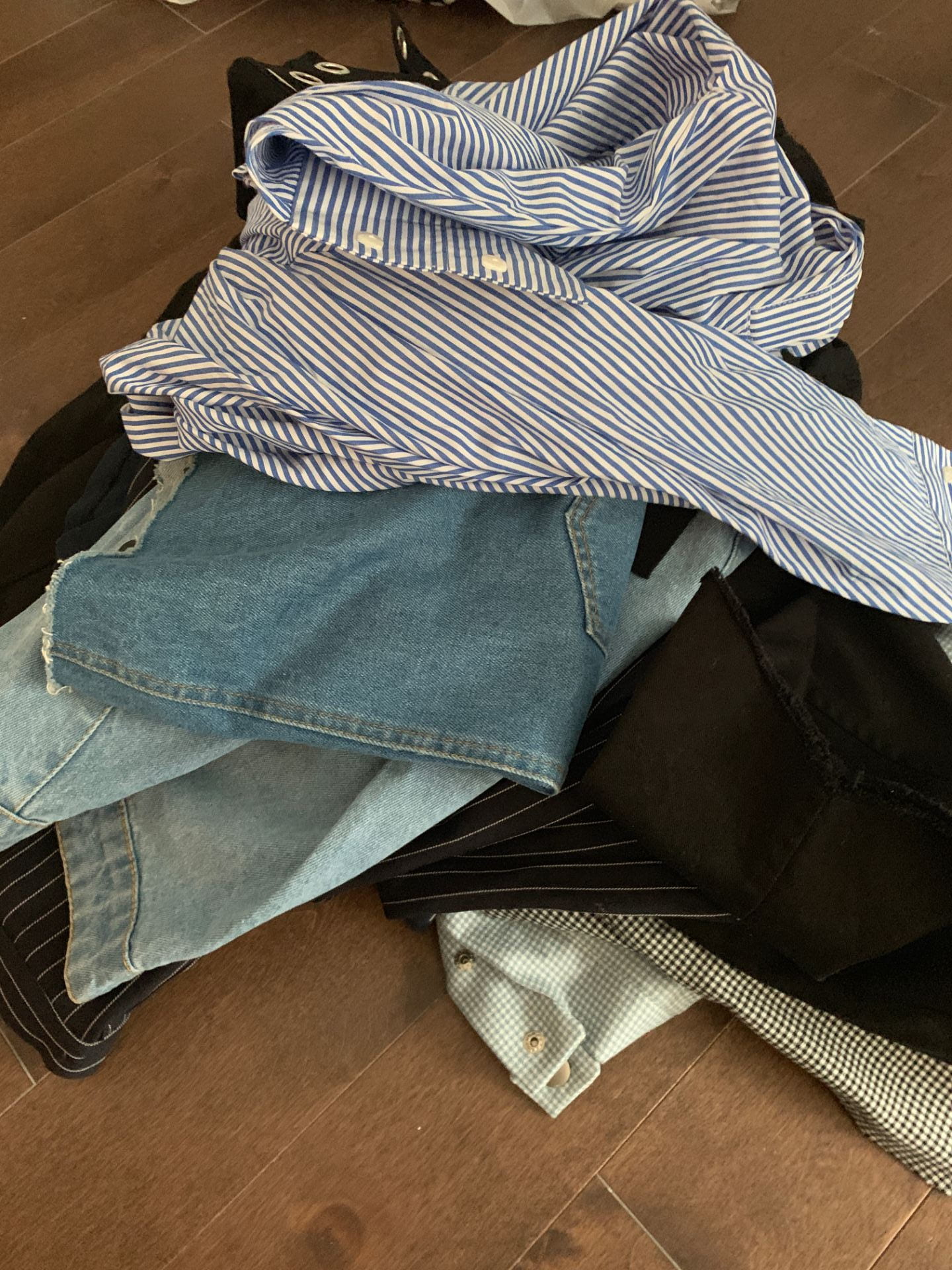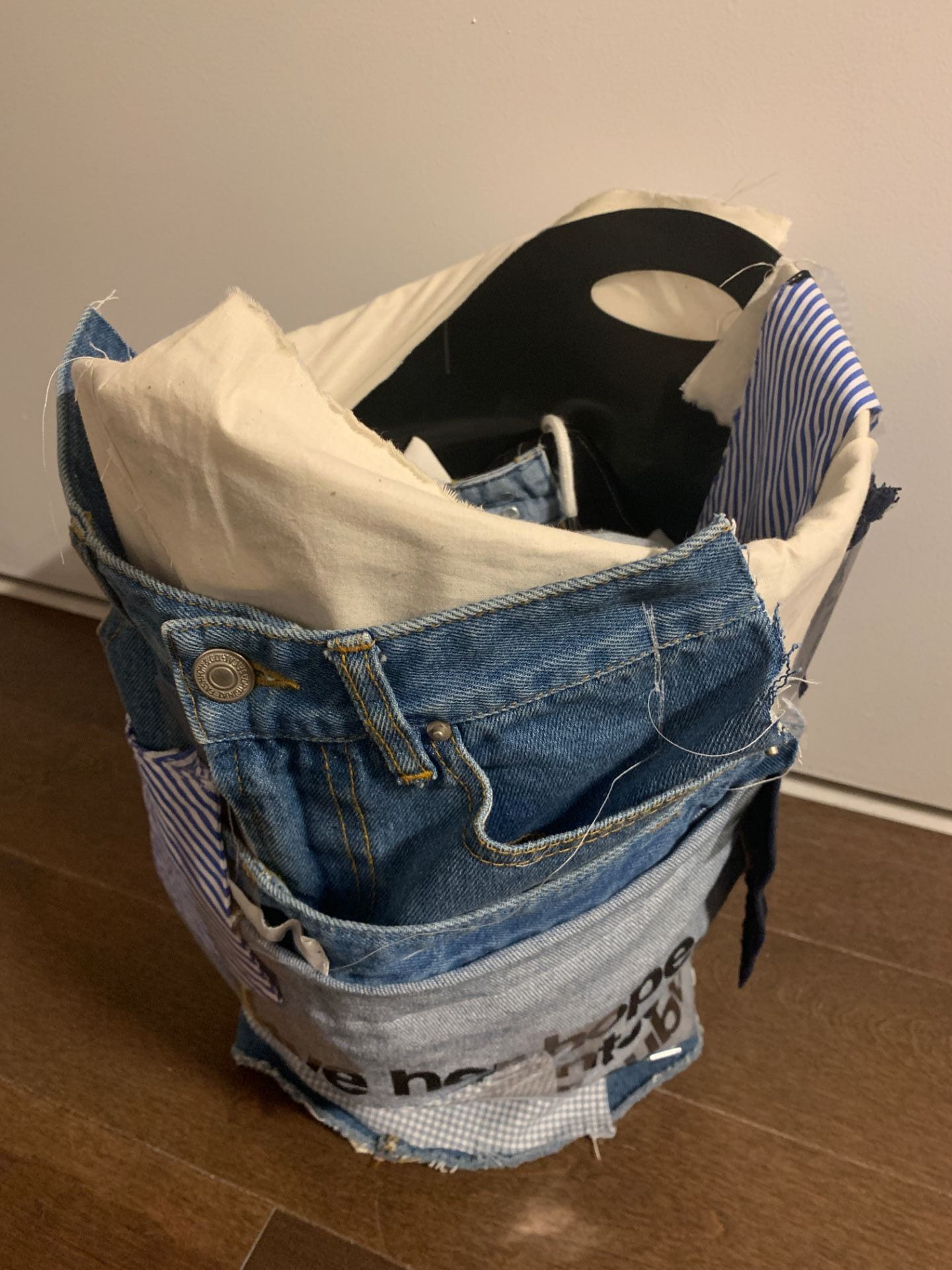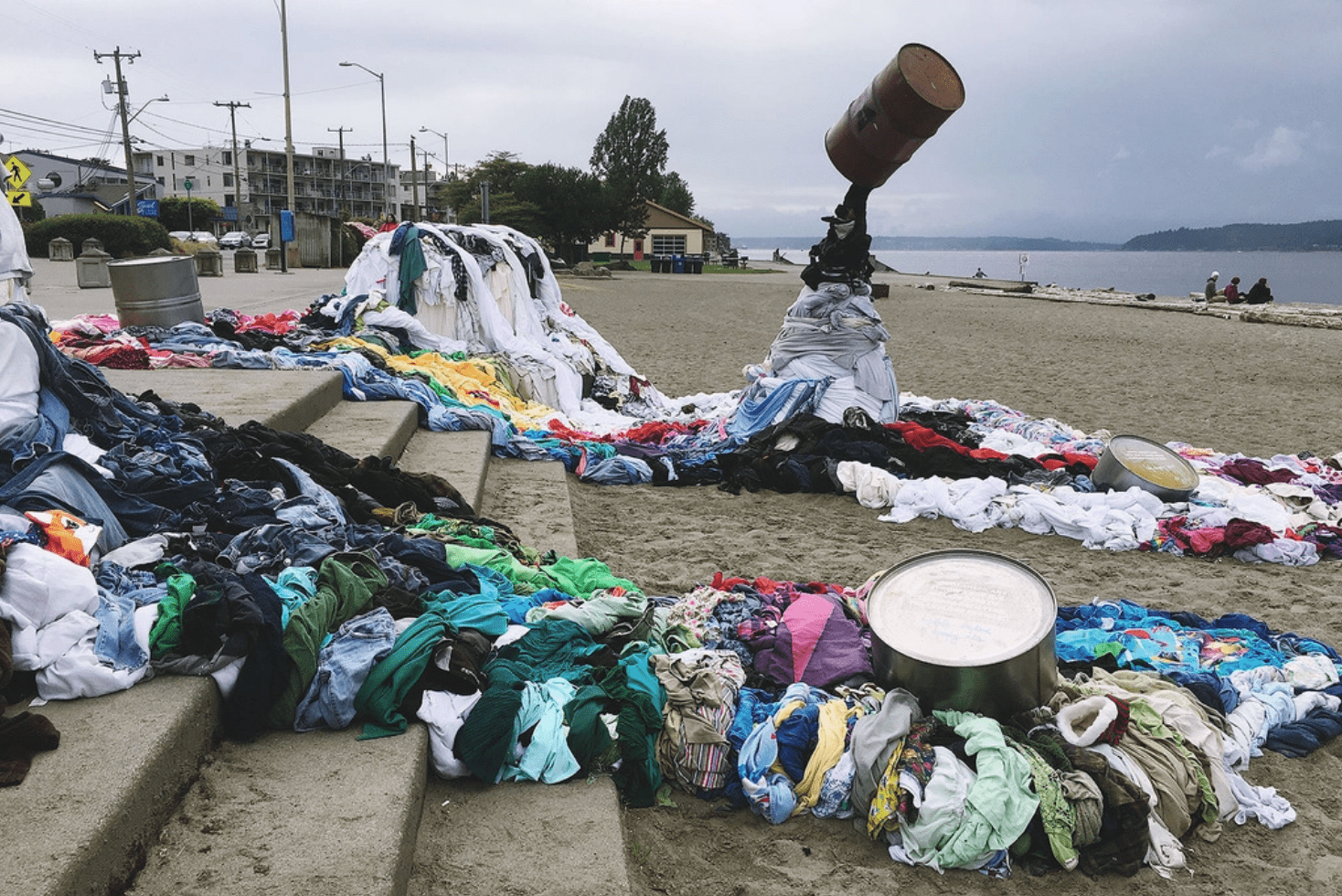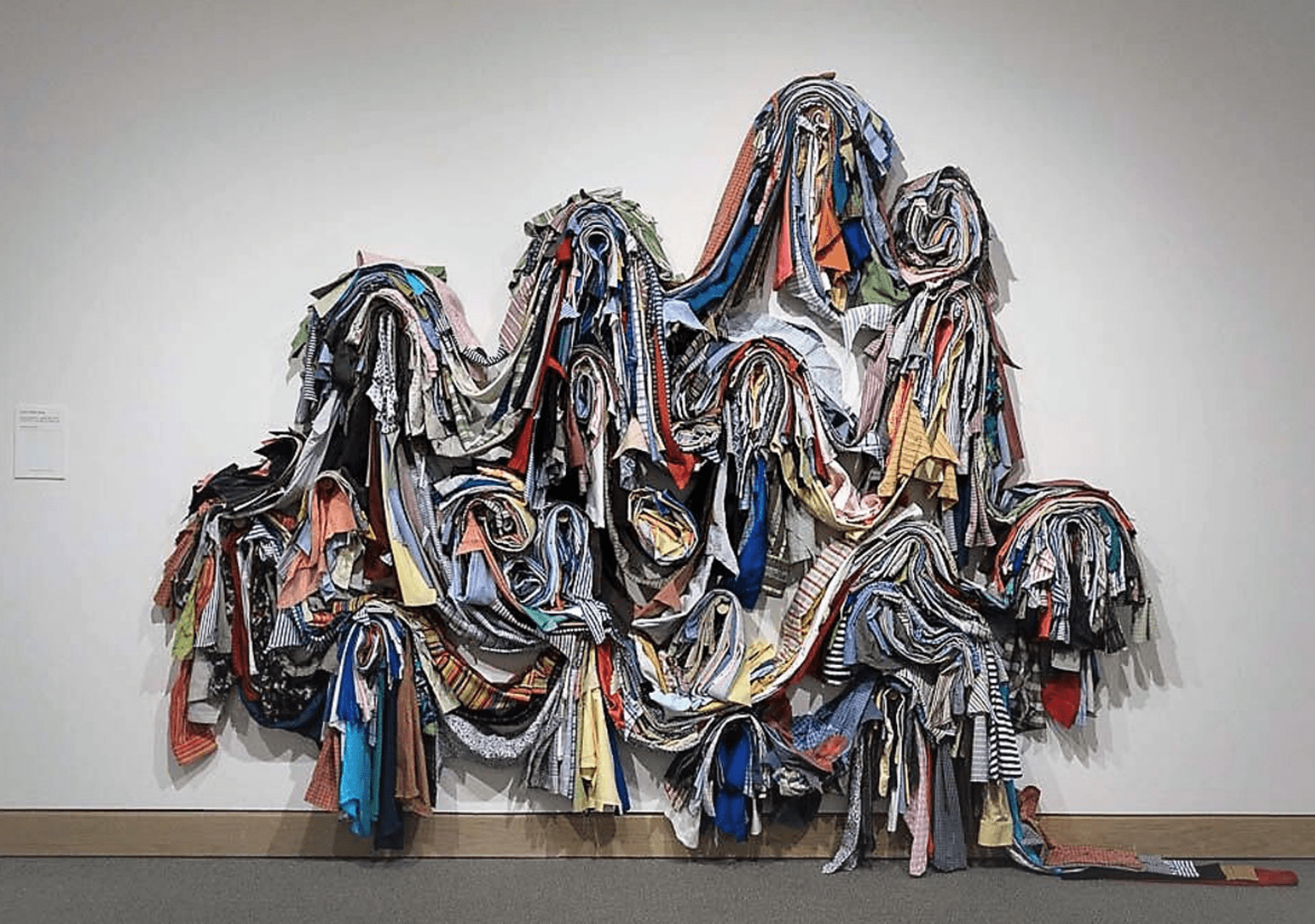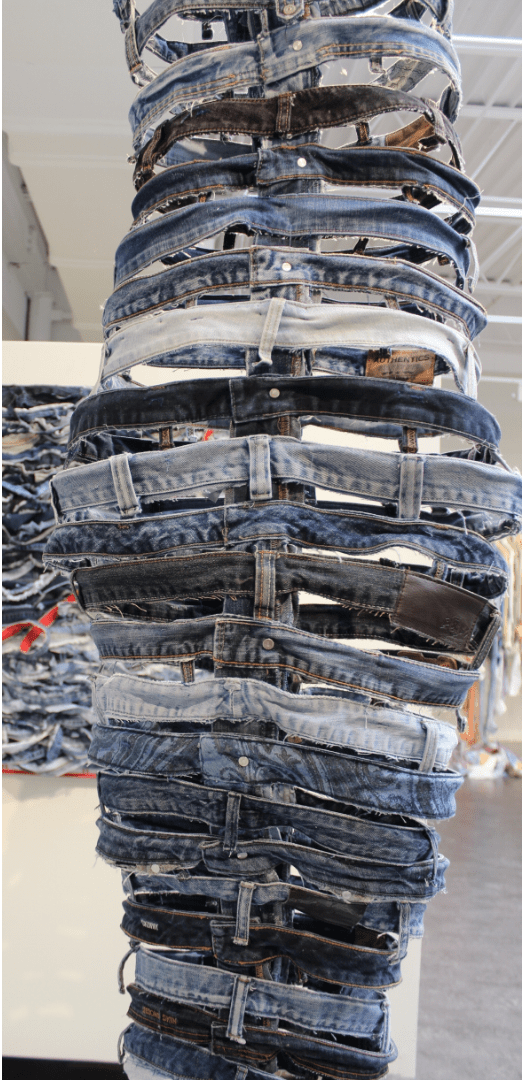Jean Paul Gaultier
Corset-style bodysuit with garters created for Madonna for the Blond Ambition World Tour, 1990.
Known as the enfant terrible of the fashion world, many of Jean Paul Gaultier’s designs were created with rebellion in mind. This duchess satin corset, for example, subverts the notion that undergarments have to be worn under more “ socially acceptable” clothes. The baby pink hue, bows, and hyperfeminine silhouette are reminiscent of the bullet bras of the 1950s, a decade where women are expected to be good wives and the binary notion of femininity was applauded.
Despite the visual resemblance of lingerie from that era, this piece instead symbolizes sexual freedom for women. It was worn by Madonna during the “Express Yourself” sequence of her Blond Ambition World Tour where it was seen peeking under an oversized mens’ suit before she took it off, revealing the corset underneath. This clash between the bound and liberated, the masculine and feminine, as well as gender fluidity are ideas that I would like to explore in my design. The contrast between dark, masculine suiting and hyperfeminine pastel corset shows how women can navigate the spectrum effortlessly, dressed both for the bedroom and the boardroom at the same time.
Vikki Dougan in a backless dress, photographed by Ralph Crane, LIFE Magazine, 1957.
In 1950s Hollywood, pin-up girl turned aspiring actress Vikki Dougan was nicknamed “The Back” by the press due to her back-baring dresses she was often seen wearing. Her provocative style was the creation of publicist Milton Weiss, who commissioned three backless dresses for her to wear to attract people’s attention.
This candid image of her walking down the street while passersby are turning their heads makes me can’t help but wander: was she comfortable with the attention she was getting? Was it reductive and objectifying to give her a nickname such as “The Back”? Today, how has the demand to be “sexy” changed for female celebrities? In my design and personal style, I’d like to explore clothing as a marker of women’s sexuality and how it affects society’s monitoring of women’s bodies.
Anna Nicole and her 89-year old husband, the multi-millionaire J. Howard Marshall at Christmas, photographed by Terry Willows/SIPA Press, PICA Pressfoto, 1994.
A year after securing the 1993 Playmate of The Year title from Playboy magazine, 26-year old Anna Nicole Smith married oil tycoon J. Howard Marshall whom she met in a strip club. This photo shows her embracing her elderly husband, while her son from a previous marriage Daniel Wayne Smith was sitting next to his stepfather.
63 years of age difference between the two resulted in Smith being called a gold digger. However, she did not seem to mind the allegations. She continued being her glamorous and larger-than-life self, a persona that was often portrayed through her choice of clothing and makeup. This picture, for example, shows the two men of the family in somber, black suits. Both men can be considered lacking virility, seeing that one is a wheelchair-bound 89-year old and the other a little boy.
Smith, on the other hand, did not “tone down” her hyperfeminine image as a pin-up bombshell for an otherwise mundane family photo. She was wearing a bright red mini dress with a plunging neckline, putting her legs and cleavage on display. Her look was completed by a pair of red high-heeled shoes, red nails, and red lipsticks–all of them are artifacts of traditional femininity in a color that often symbolizes love, power, passion, and sexuality. This is an idea that I would like to apply in my personal style: that there’s no such thing as “toning down” oneself in order to fit society’s “accepted” idea of what someone should be.
